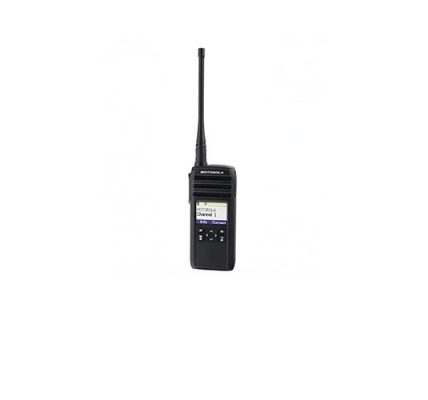Waterproof Plug and Socket Connector
Waterproof plug and socket connector are used in electrical installations that require a complete protection against damp, water and dust. They are also suitable for outdoor use.
Whether at a sewage treatment plant, automatic car wash establishment or in rural homes, dust and water can easily damage electrical wiring if the connectors are not waterproof.
Waterproofing
Waterproof plug connectors provide a layer of protection to keep electrical wiring systems operational in demanding environments. They feature sealing mechanisms, such as rubber gaskets and O-rings, to prevent the intrusion of water or dust. They’re often rated with an IP rating, which determines how well they protect against solid objects and liquids.
Electrical connections can be damaged by rain, snow, or humidity if they aren’t waterproofed. This damage can lead to circuit overloads, electrical shorts, and system failure. Waterproof plug connectors prevent these damaging environmental conditions from occurring, ensuring that your connections and wiring stay functional and safe.
These splices are made from durable plastic or metal, so they can withstand exposure to UV rays, extreme temperatures, and physical stress without losing integrity or waterproof plug and socket connector functionality. They also have inspection windows to help you make sure your connections are secure. When heated, the adhesive-lined insulation shrinks and bonds to wires, creating a water- and corrosion-resistant seal.
Waterproof plug and socket connectors can be used in a variety of applications, including marine, automotive, and industrial settings. They’re commonly found in outdoor lighting systems, landscape and garden installations, swimming pool equipment, and other electrical devices that are exposed to moisture. They’re also used in sewage treatment plants, oil refineries, automatic car wash establishments, and rural homes, among other locations that require a high level of safety and reliability.
Sealing
When water, dust, or other environmental contaminants reach a wire or cable, they can disrupt electrical signals, damage the circuit, or cause shorts. To prevent this from happening, waterproof connectors have a seal that keeps moisture out. The seal may be a rubber gasket, a plastic cap, or something else. It is important to select a seal that fits the connector snugly and has good tolerances so it doesn’t break or leak.
Many waterproof plug connectors are designed for easy assembly, which saves time during installation. They also have a push-lock or twist-lock mechanism that helps secure the connection. This feature is especially useful for applications where the connector will be exposed to harsh environments.
Another benefit of waterproof plug and socket connectors is that they are durable. They are made of materials that can withstand UV rays, extreme temperatures, and physical stress. They are a good choice for outdoor electrical connections, industrial applications, and marine environments.
If you’re looking for a waterproof connector that can be used in harsh environments, try one of Positronic’s hermetic or sealed environmental connectors. These include the Front Runner (FR) series, Baby King Cobra (BKC) series, or Talon Mini series. They are a cost-effective alternative to more expensive IP68 rated waterproof connectors. They also have a hermetic seal, which provides greater protection against liquids and dust.
Installation
Whether your equipment is on the water or in an industrial setting, waterproof connectors protect your wiring from moisture and other environmental factors. This helps prevent electrical shorts and failures, saving you the costs associated with repairs and downtime.
They also help keep your wires safe from damage caused by chemicals and harsh environments. They are made of durable plastics and metals that withstand physical stress, UV radiation, and extreme temperatures.
Many different types of waterproof plug connectors are available, so it’s important to choose one that fits your specific needs. Some are designed to fit in tight spaces, while others offer a more durable construction for heavy-duty use. You should also consider the IP rating of your waterproof plug connector, which indicates how much water and dust it can withstand.
A waterproof connector has an O-ring seal that keeps the wires inside, preventing them from getting wet or damaged by rain, snow, and other elements. Some of these connectors are also compatible with ABYC standards, making them ideal for marine and automotive applications. The ABYC standard requires that the waterproof connector have an excellent strain relief and small terminal screws to reduce the risk of a fire or electrical short. This makes it safer than other, less technically compliant waterproof plug connectors. You may even want to consider waterproof light socket a “harsh environment” connector that’s a variant of a standard plug or socket, but has an extra outer shell and screw lock to resist corrosion.
Maintenance
Electrical connections that are exposed to water can corrode and cause problems in the system. These problems can include disruption of signals and shorts in the wires. To prevent this from happening, waterproof plug and socket connectors help to protect the wiring from damage. They also allow for easy maintenance and upgrades without the need for rewiring or special tools.
The materials and design of waterproof connectors make them a versatile choice for many different applications. In addition to their water-resistant properties, they can also provide resistance to extreme temperatures, abrasion, and chemical exposure. Additionally, some waterproof connectors are designed to withstand the test of time.
Waterproof electrical connectors are a great choice for outdoor lighting systems, landscape and garden installations, swimming pool equipment, marine and boating applications, and industrial automation systems. They can also be used in residential settings such as bathrooms and kitchens.
To maintain the performance of these devices, it is important to perform regular maintenance. This includes physically disconnecting and visually inspecting unprotected connectors for signs of corrosion. If the connectors are in bad condition, they should be cleaned and stripped, crimped with new terminals, and rewired with the proper cable. After all, if electrical connectors become damaged by corrosion, they will not be able to perform as efficiently and may not last for their expected lifetime.

